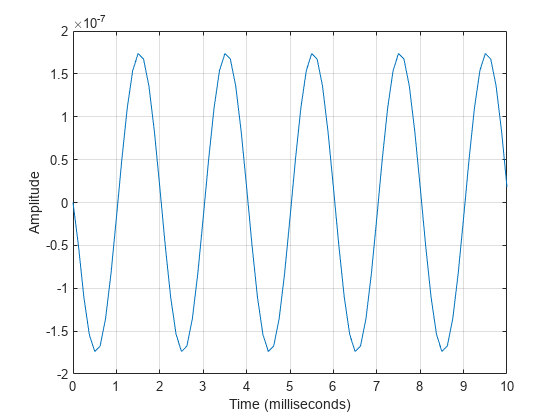step
System object: phased.LOSChannel
Namespace: phased
Propagate signal in LOS channel
Syntax
prop_sig = step(sLOS,sig,origin_pos,dest_pos,origin_vel,dest_vel)
Description
Note
Starting in R2016b, instead of using the step method
to perform the operation defined by the System object™, you can
call the object with arguments, as if it were a function. For example, y
= step(obj,x) and y = obj(x) perform
equivalent operations.
prop_sig = step(sLOS,sig,origin_pos,dest_pos,origin_vel,dest_vel)prop_sig, when a narrowband
signal, sig, propagates through a line-of-sight
(LOS) channel from a source located at the origin_pos position
to a destination at the dest_pos position. Only
one of the origin_pos or dest_pos arguments
can specify multiple positions. The other must contain a single position.
The velocity of the signal origin is specified in origin_vel and
the velocity of the signal destination is specified in dest_vel.
The dimensions of origin_vel and dest_vel must
match the dimensions of origin_pos and dest_pos,
respectively.
Electromagnetic fields propagating through an LOS channel can
be polarized or nonpolarized. For nonpolarized fields, the propagating
signal field, sig, is a vector or matrix. For
polarized fields, sig is an array of structures.
The structure elements represent an electric field vector in Cartesian
form.
Note
The object performs an initialization the first time the object is executed. This
initialization locks nontunable properties
and input specifications, such as dimensions, complexity, and data type of the input data.
If you change a nontunable property or an input specification, the System object issues an error. To change nontunable properties or inputs, you must first
call the release method to unlock the object.
Input Arguments
Output Arguments
Examples
References
[1] Radiocommunication Sector of the International Telecommunication Union. Recommendation ITU-R P.676-10: Attenuation by atmospheric gases. 2013.
[2] Radiocommunication Sector of the International Telecommunication Union. Recommendation ITU-R P.840-6: Attenuation due to clouds and fog. 2013.
[3] Radiocommunication Sector of the International Telecommunication Union. Recommendation ITU-R P.838-3: Specific attenuation model for rain for use in prediction methods. 2005.
[4] Seybold, J. Introduction to RF Propagation. New York: Wiley & Sons, 2005.
Version History
Introduced in R2016a

